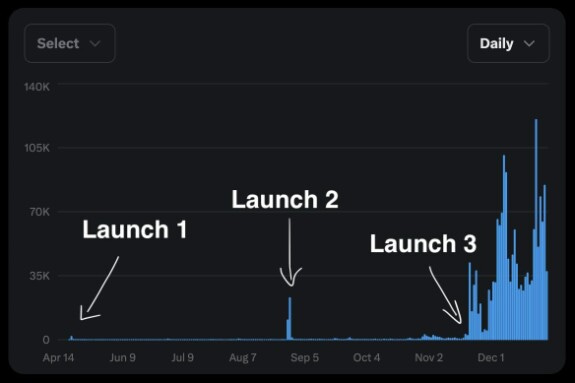Lovable: How AI Copilot Gained $4M ARR
Growthhacks and Platform Review
If you think coding copilots are a niche only available to a few “big guys” (like GitHub and Cursor), prepare to be surprised. The other day, we came across two creators who built a product that grew to $4M ARR in just four weeks after the subscription was introduced.
And now we're sharing it with you.
Today, we're breaking down:
Strategy for successfully launching an AI startup
Unusual approach to monetization and marketing
How to use this platform to build apps
Keep your mailbox updated with practical knowledge & key news from the AI industry!
Background & How They Start
So, meet Anton Osika and Fabian Hedin—two entrepreneurs, developers, and AI enthusiasts from Stockholm, Sweden. Both have remarkable backgrounds.
Osika started developing apps at 12, founded the Stockholm AI community a few years ago, and became a co-founder & CTO at the startup Depict AI. This company went through Y Combinator and later raised $20M.
The second one, Hedin, also had good startup experience. He made his first exit from a PropTech project while still in school (!), worked as a developer at several startups, coded at SpaceX, and founded some other companies (Tentium and TenFast).
When Osika and Hedin met, they started by building an open-source project called GPT Engineer (it made quite a bit of noise at one point). It was essentially a test case for a future startup.
GPT Engineer is a platform for automatically generating web apps. It allows users to describe the features they want in natural language, and the AI generates production-ready code. This tool was designed for experienced developers and non-technical users, facilitating quicker iterations and providing feedback on coding tasks.
The founders invited the most active devs to join the board of directors.
Although GPT Engineer was positioned as a commercial project, it was too hard to monetize it. However, Osika and Hedin got something more important: an active community of loyal developers in Discord and on GitHub. Users maintained the code, fixed bugs, created new features, and attracted newcomers to development.
Thus, GPT Engineer built a basic audience without investing in marketing or hiring testers. However, they still wanted to profit from the project.
And that's what the founders did.
Spoiler: it didn't work out the first time.
Sharing is caring! Refer someone who started a learning Journey in AI!
New Brand, Marketing & Monetization
The founders knew that GPT Engineer was in rabid demand, but they needed to address a few issues before they could monetize the project. Namely:
Avoid branding problems: Since the launch, other “GPT engineers" have appeared on the market, causing confusion among users. In addition, the original name made it seem like an OpenAI spin-off product.
Broaden the audience: GPT Engineer was hosted on GitHub (and later hosted by gptengineer. app), although it was aimed at non-technical users. Osika and Hedin realized that potential customers might simply not know they existed.
New Brand
To solve these, they refused to generate code through the terminal and made a visually pleasing app. The startup was named Lovable.
One of the platform's main advantages is its self-correcting code. Competitors often break old solutions when they create new ones. But Lovable doesn’t have this problem: the founders (somehow) managed to get rid of one of the critical drawbacks of analogs.
Integrations with many ready-made libraries and tools, including Stripe, Supabase, Shadcn, and Resend, were also necessary. Other code generators don't always work with third-party solutions, and the ones that do work produce the most bugs.
This has greatly increased the value of Lovable.
Marketing
After that, the founders started engaging their audience via Twitter and Discord. Firstly, they showed projects created using their platform. The Lovable account discussed case studies, shared detailed guides, and showed results. This increased loyalty among existing users and worked as a proof of concept.
Unfortunately, it wasn't enough.
During 2024, they conducted test launches three times. First in April, then in September and finally in December. It wasn't until the problems of the month that Lovable emerged from the developer bubble and began to be in widespread demand.
The situation was most likely saved by Influencer Marketing.
If you're trying to figure out how to reach your audience, here's a post with another case study and a bunch of helpful prompts:
Judging by YouTube clips, the startup purchased several partner integrations. Bloggers liked the tool, so many creators started posting reviews and comparisons with other AI coding platforms. These drove traffic to the website.
Monetization
As for monetization, the platform was initially free. All the user had to do was to use their OpenAI key. When the founders felt they could introduce monetization, they launched a subscription model. Each subscription option provides a different number of credits needed for each code generation.
Lovable now has four tiers:
Starter – $20/mo
Launch – $50/mo
Scale1 – $100/mo
Enterprise – customized
Within four weeks of the subscription becoming available, Lovable reached an annual recurring revenue (ARR) of $4M.
Sharing is caring! Refer someone who started a learning Journey in AI!








